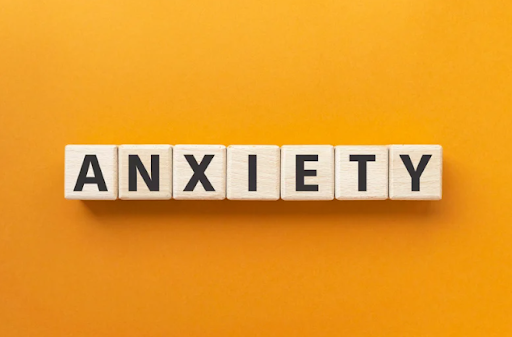Five Myths about Anxiety (and the Truth Behind Them)
Anxiety ranks among the most common mental health challenges worldwide, affecting millions regardless of age, background, or lifestyle. Despite its prevalence, many people misunderstand anxiety. Myths and misconceptions oversimplify or misrepresent what it means to live with an anxiety disorder.
These false beliefs often minimize the real emotional and physical struggles individuals face or reduce anxiety to a passing stress that can be easily managed. Such misunderstandings fuel judgment, stigma, and isolation, preventing people from seeking the care, support, and compassion they need.
Whether you experience anxiety or support someone who does, recognizing these truths helps break stigma, encourage early intervention, and foster informed, compassionate care.
Myth 1: Anxiety is Just Normal Stress
The truth: Anxiety disorders go beyond temporary nerves.
Anxiety disorders go beyond occasional nervousness before presentations or stressful workdays. Clinical anxiety persists, feels intense, and often seems irrational. It causes excessive worry or fear that can disrupt daily life. These feelings don’t fade with time or simple relaxation techniques. People with anxiety disorders often feel consumed by worry, even without an immediate threat. Anxiety is not a character flaw.
It is a diagnosable mental health condition caused by complex interactions among brain chemistry, genetics, and environment. Managing anxiety often requires therapy, medication, lifestyle changes, and a supportive network. Recognizing it is the first step toward effective treatment.
Myth 2: Avoiding Triggers is the Best Way to Cope
The truth: Avoidance might feel helpful in the moment, but it reinforces the idea that the fear is valid.
Avoidance is one of the most common ways people cope with anxiety. On the surface, it makes sense — avoiding triggers feels safer. In the short term, avoidance often works. You skip the anxiety trigger and feel immediate relief. Over time, avoidance backfires. Each time you avoid feared situations — like social interaction, public speaking, driving, or checking email — you reinforce the belief that the problem is dangerous or unmanageable.
This cycle increases fear and decreases confidence. Your anxiety feels more justified, and your ability to cope feels weaker. The good news is that anxiety doesn’t have to rule your decisions. Evidence-based treatments like Cognitive Behavioral Therapy (CBT) and Exposure Therapy help break the avoidance cycle.
These therapies gradually and safely expose you to feared situations. They retrain your brain to think differently and build tolerance over time. Exposure Therapy repeatedly introduces anxiety-provoking situations in a controlled, supportive way. This helps you see that discomfort is tolerable and feared outcomes are often unlikely or manageable. CBT pairs this exposure work with practical tools to identify and challenge unhelpful thought patterns, giving you a clearer, calmer perspective.
Facing your fears isn’t easy, but it is empowering. Therapy helps you reclaim agency, rebuild confidence, and re-engage with life on your terms.
Myth 3: Anxiety Always Looks Like Panic Attacks
The truth: Not everyone with anxiety has panic attacks.
Not everyone with anxiety experiences dramatic episodes like panic attacks. For many, anxiety shows up quietly, in persistent ways that are easy to overlook or misunderstand. It can appear as a constant sense of unease, a low-level dread that lingers throughout the day, or relentless mental chatter filled with what-ifs and worst-case scenarios. Some people get trapped in cycles of overthinking, second-guessing decisions, or feeling on edge without knowing why. Chronic, background anxiety can disrupt daily life as much as more visible symptoms.
This quieter form of anxiety often goes unnoticed, especially in people who seem calm, composed, or high-functioning. Because it doesn’t look like a full-blown crisis, others — and sometimes even the person experiencing it — may minimize or dismiss it.
Just because anxiety is quiet doesn’t mean it isn’t impactful. Recognizing these subtler symptoms is crucial for understanding, compassion, and effective support for those living with anxiety.
Myth 4: Anxiety Only Affects Your Mind
The truth: Anxiety is a whole-body experience.
Anxiety impacts more than your mind — it affects your entire body. Your nervous system triggers a strong fight-or-flight response. In anxiety disorders, this response activates too often or without real threats, producing noticeable physical anxiety symptoms. Common symptoms include rapid heartbeat, muscle tension, headaches, digestive issues, dizziness, sweating, shortness of breath, and sleep difficulties. Hormones like adrenaline and cortisol flood the body, causing real, measurable reactions. These sensations are not imagined or exaggerated.
Physical symptoms can create a cycle: noticing them increases anxiety, intensifying your body’s response and triggering avoidance behaviors. Understanding anxiety as a full-body experience helps reduce stigma and supports a comprehensive treatment approach that addresses both mind and body.
Myth 5: If You’re Functioning, Your Anxiety Must Not Be That Bad
The truth: Many people with anxiety are high-achieving and outwardly composed while privately struggling.
Many people with high-functioning anxiety appear calm, successful, and composed. They excel at work, maintain relationships, and handle daily challenges well. Despite outward appearances, hidden anxiety can create persistent worry, self-doubt, and mental exhaustion that others rarely see.
High-functioning anxiety often makes daily life feel like a constant effort to stay in control, even when fear or overwhelm simmers beneath the surface. Being functional doesn’t always mean thriving or feeling well. Recognizing hidden anxiety helps challenge misconceptions and encourages a more compassionate understanding.
Supporting people with high-functioning anxiety means looking beyond appearances and providing safe spaces to share authentic experiences without judgment.
Final Thoughts: Why Busting Anxiety Myths Matters
Anxiety is a complex, multifaceted condition that affects each person differently, shaping experiences in deeply personal ways. Because anxiety appears differently for everyone, people often misunderstand or overlook it. Some carry anxiety quietly while excelling at work or managing daily responsibilities.
Others experience overwhelming physical sensations or visible emotional distress. Dispelling common myths about anxiety does more than correct misinformation — it helps break the stigma that keeps people silent and isolated. By moving beyond assumptions and recognizing anxiety as a serious mental health disorder, we create opportunities for meaningful treatment and compassionate care.
Want to Learn More?
